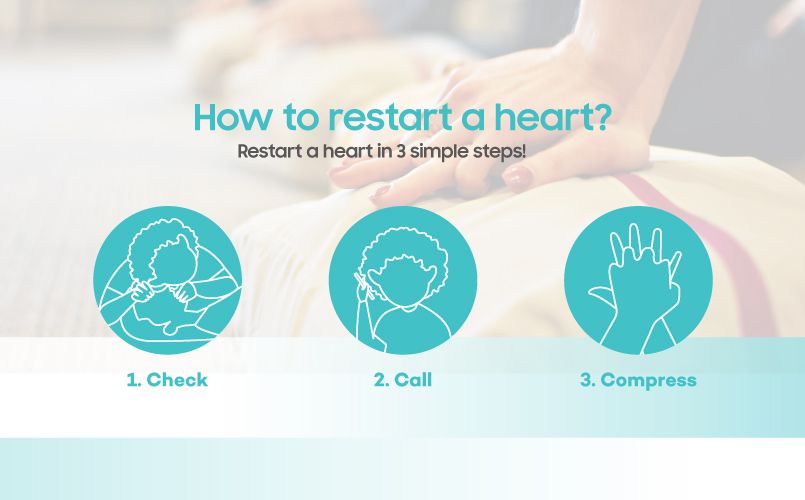


World Restart a Heart Day is observed annually on October 16 to raise public awareness of cardiac arrest and educate the public on how to help cardiac arrest patients restart their hearts.
Cardiac arrest means that the heart stops beating unexpectedly due to an electrical problem. At that time, the heart stops pumping blood around the body to the organs, including the brain. During cardiac arrest, people become unconscious quickly. In addition, they may experience other symptoms such as shortness of breath, chest pain or discomfort, irregular heartbeat, and unexplained wheezing. If not treated immediately, sudden cardiac arrest will result in hypoxic-anoxic injury (HAI) and sudden cardiac death within minutes.

Cardiopulmonary resuscitation is crucial when a person’s heart stops beating or breathing. If it lasts longer than 5 minutes without CPR, patients with cardiac arrest may suffer brain death, and if it lasts longer than 8 minutes, they may die. So CPR training is necessary; immediate CPR makes it possible for everyone to help save lives, and it can double or triple the chance of surviving cardiac arrest patients. Cardiac arrest is more common than you think, it can happen anywhere, at any time, and 88% of cardiac arrests occur at home.[1] This means that the lives you save with CPR are likely to be your family, friends, or loved ones.

For the general public or passersby who witness a person suddenly fall to the ground with suspected cardiac arrest, here are a few steps to follow:

· Check the scene
· Check if the person is unresponsive
· Tilt his head back slightly, lift his chin to open the airway, and check his breathing
If there is no breathing or no movement or signs of life, CPR is needed.
· Call 911 and follow their instructions
· If someone is nearby, shout for help, ask them to call 911, and bring the AED
· Place the person on their back on a firm, flat surface
· Place your hands on the center of the victim’s chest between the nipples, with the fingers interlocked
· Give 30 compressions at a rate of 100-120 compressions per minute at least 5 cm deep
· Provide two breaths after every 30 chest compressions mouth-to-mouth for 1 second each
· If the AED comes, open it immediately and follow the instructions
· Do not delay or interrupt heart compressions until the ambulance arrives
Timely CPR is one of the most important treatments to increase the survival of cardiac arrest patients. The more passersby who know CPR, the greater the possibility that patients with an out-of-hospital cardiac arrest can recover.
[1] American Heart Association. (2019). Available at: https://cprblog.heart.org/cpr-statistics/